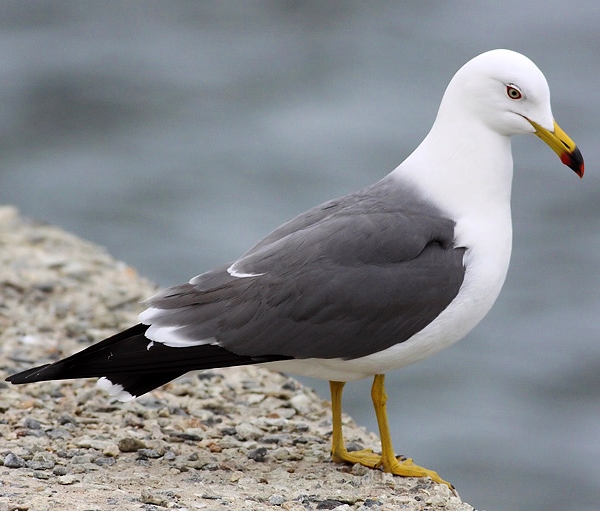 |
| Photo by Tom Edelsten (Birds Korea) |
Common name:
black-tailed gull (en); gaivota-do-Japão (pt); goéland à queue noire (fr); gaviota japonesa (es); Japanmöwe (de)
Taxonomy:
Order Charadriiformes
Family Laridae
Range:
This species breeds in northern Japan, extreme south-eastern Russia, Korea and north-eastern China. Some population migrate south to winter along the coasts of Japan and the East China Sea down to Hong Kong.
Size:
These birds are 46-48 cm long and have a wingspan of 118-124 cm. They weigh 440-640 g.
Habitat:
The black-tailed gull is found breeding in rocky offshore islands, sea cliffs and rocky shorelines, foraging on a variety of coastal habitats including rocky and sandy intertidal areas, tidal pools, kelp beds, seagrass beds, reefs, estuaries and also on the open sea.
Diet:
They feed on fishes, especially sand lance and Japanese anchovy, molluscs, polychaetes, crustaceans, insects and also carrion and human waste. They often follow fishing vessels in search of food and also steal food from other seabirds.
Breeding:
Black-tailed gulls breed in May-July. They form large breeding colonies and nest on sandy areas, or among rocks, in a shallow scrape that is usually lined with dry grasses. There the female lays 2-3 eggs, which are incubated for 24-27 days. The chicks fledge 35-40 days after hatching.
Conservation:
IUCN status – LC (Least Concern)
This species has a relatively large breeding range and the global population is estimated at 1,1 million individuals. The current population trend is unknown, but is suspected to be stable in the absence of evidence for any declines or substantial threats.







